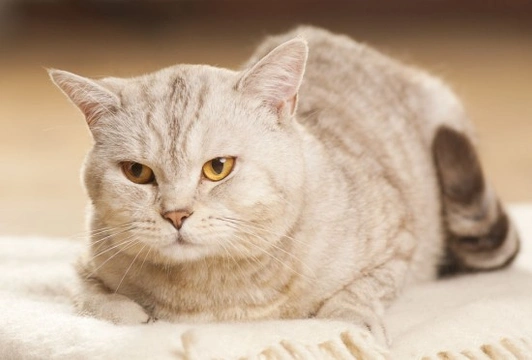
Cat Dandruff - Causes and Treatment
The term “dandruff” refers to skin cell shedding from underneath the hair or fur of an animal, and can be present in pets as well as people. All animals shed skin cells naturally as part of the body’s usual regeneration processes, and usually, the presence of shed skin cells is neither pronounced nor problematic. However, excessive skin cell shedding to the point that it is noticeable within the hair or coat as lots of small white flakes is what we usually refer to as dandruff, and can be indicative of a problem with the skin or hair follicles underneath.
Does your cat suffer from dandruff, or are you concerned about the amount of shed skin cells present in your cat’s coat? Read on to find out more about cat dandruff.
Identifying when cat dandruff is a problem
All cats, like all people, shed skin cells naturally, and these are usually washed away when bathing, or in the case of cats, naturally work their way out of the coat as part of shedding and the rigorous grooming routines that most cats follow.
Seeing the odd flake of dandruff on the surface of your cat’s fur is not cause for concern, and when you part your cat’s fur down to the skin, you may identify the presence of tiny white skin cells that have not yet worked their way out of the coat.
If your cat’s coat is dull, this can sometimes be caused by excessive dandruff from the skin absorbing the natural oils present in the fur, leading to fur that does not have its signature sheen and shine, and may feel rough to the touch.
This is one indicator of problem dandruff, and another is seeing significant amounts of dandruff present on the surface of the fur, or within the tines of a brush or comb used for grooming. Dandruff, and exactly how much of it is present, is much easier to spot on dark coloured cats than light ones, and so if you have a light coloured cat, try brushing them and then holding the resulting cluster of hair up to the light to identify the quantity of flakes within it.
Try a simple fix first
If you feel that your cat’s coat is dull due to dandruff, or you have identified a significant amount of dandruff present in the skin, this will require further investigation. But before you pop your cat along to the vet to be checked out, it is worth finding out if your cat’s dandruff is something that you might be able to resolve yourself at home relatively easily.
Observe your cat’s grooming regime; most cats are fastidious about their grooming, and you should see them attending to their coat several times a day. If you cat doesn’t seem to groom themselves much or is ill or otherwise unable to groom themselves properly, you will need to help them out with supplementary brushing and grooming, if you do not do so already.
Brushing your cat for just a few minutes at a time once or twice a day is really good for both the skin and the coat, and is something that many cat owners do as standard. If you own a longhaired cat, this is particularly important, to avoid knotting and matting, all of which interfere with the normal shedding of the coat and can cause shed skin cells to be unable to work their way out of the coat naturally. You may also wish to bathe your cat before you first embark upon a brushing routine, to remove as much of the built up dandruff and loose fur as possible.
When you stroke your cat, only a few strands of their fur should shed; if your cat billows clouds of fur whenever you stroke them, or sheds fur all around the house, this indicates that their normal grooming routine, however rigorous, is not enough. In this case, you should pay special attention to your cat’s brushing and grooming, to avoid both dandruff and hair ball ingestion.
You should also make sure that your cat is not suffering from a flea infestation, mites, or any other parasitic passenger, and seek treatment if you suspect that this may be the case.
Is dandruff a symptom in itself?
While dandruff in cats may come and go without unduly affecting your cat or may simply come about as a result of inadequate grooming or brushing, dandruff can itself be a symptom of something else amiss with your cat. If dandruff persists or recurs despite bathing and giving a supplemental brushing routine time to prove its effectiveness, you may need to consider the possibility that your cat’s dandruff is indicative of an underlying problem that will require a veterinary consultation to diagnose and treat.
Dandruff can be a symptom of a range of other health conditions, and you should consider any other symptoms or changes in behaviour that your cat is displaying alongside of their excessive skin shedding in order to identify if something is amiss.
When you groom you cat, keep an eye out for any sore areas, hot patches of the skin, thinning of the coat or localised patches of excessive dandruff, which may indicate that an underlying skin problem such as dermatitis is present.
Dandruff in cats also sometimes accompany various other conditions, such as diabetes, seborrhoea or sunburn, and can also come about as the result of feeding an inappropriate diet, or lacking essential nutrients within the food.
If your cat’s dandruff is persistent or recurrent despite your best efforts to groom and brush your cat, you should pop your cat along to your vet for further investigation, so that any potential underlying cause may be identified and treated or managed before it progresses further.



